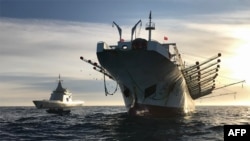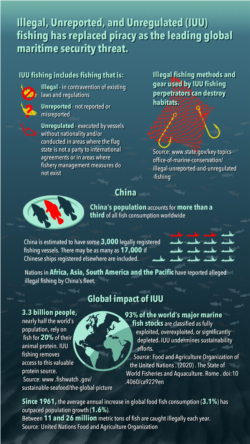According to local press reports, Kenya has opted out of banning imported Chinese fish, a prohibition that had been considered to protect the local industry, because the African nation is facing a fish shortage.
Kenya's Agriculture Cabinet Secretary Peter Munya, quoted in the Daily Nation, said, "The challenge we have in the country is insufficient local fish to satisfy the market, and hence you cannot ban imports that fill that gap that we are facing. You only ban when you raise the capacity to produce locally."
The AfricaNews website reported previously that Kenya's agriculture committee had said it would ban fish imports from China, pointing to the availability of fish in local lakes and rivers and offshore.
The site also reported that local markets, facing a shortage of locally caught fish, had been selling imported Chinese fish and that the imported fish cost less.
Concern that inexpensive imported Chinese fish were undercutting the Kenyan fish industry was first raised in 2018, when President Uhuru Kenyatta said Kenyan government officials should figure out how to limit the imports, according to AfricaNews.
A report compiled by the Global Fishing Watch tracker between May and August showed some 230 fishing vessels off Kenya, many of them foreign owned, according to AfricaNews.
The site reported that most of the foreign-owned ships came from countries such as Italy and China.
China is "the world's largest producer and consumer of seafood, and critics say its fleets engage in aggressive tactics as the nation tries to feed its 1.4 billion people," VOA has reported. "Chinese ships have been accused of illegal and unreported fishing in many parts of the world – charges that China denies."
Kenya has more than 600 kilometers of coastline on the Indian Ocean, and it claims 22 kilometers of territorial waters, according to the Food and Agriculture Organization of the United Nations. Beyond that, Kenya, like many other nations, claims an exclusive economic zone (EEZ) of 370 kilometers.
An EEZ is reserved to a coastal country under the United Nations Convention on the Law of the Sea (UNCLOS). According to UNCLOS, the coastal country retains "special rights to exploration and use of marine resources, but the water's surface remains international territory."
Kenya's "marine fisheries can be classified into two subsectors: the coastal artisanal fishery, and the Exclusive Economic Zone (EEZ) fishery," according to the U.N.'s FAO website. "A basic feature of the coastal fishery is the largely subsistence and artisanal nature of the fishers who operate small craft propelled by wind sails and manual paddles. The EEZ fishery, on the other hand, is characterized by distant-water fishing vessels which exploit target species mainly with purse-seines and long-lines."
China has the world's largest distant-water fishing fleet, which it says it will cap at 3,000 vessels, according to VOA reporting. But a U.S. Coast Guard report says an additional fleet of 3,000 ships of the People's Armed Forces Maritime Militia "actively carries out aggressive behavior on the high seas and in sovereign waters of other nations" in pursuit of China's maritime interests.
A British research center estimates China's total fleet size is nearly 17,000 vessels when Chinese ships that fly the flags of other nations are included.
The U.S. Coast Guard report, citing a U.N. statistic, says 93% of the world's marine fish stocks are fully exploited, overexploited or significantly depleted.











